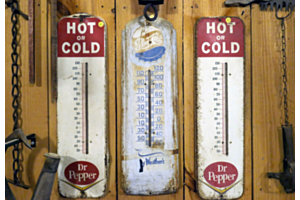Do Mini Splits Get Mold?

You think you’ve found mold on your ductless mini split. You can barely believe your eyes though. There’s no way that mold of all things can develop on the components of your mini split…right?
While it would be nice if that was true, it isn’t.
Mold prefers dark, humid, and warm conditions. A ductless mini split system checks off all those boxes, especially when it comes to the internal components like the wires and coils.
Once mold develops, it tends to spread. What could have begun as a small mold issue on the inside of your mini split system will soon spread to the outside.
By then, the sight of mold is a dead giveaway that you have a fungi problem.
Mold can appear in all sorts of colors, including black, green, white, and gray. Depending on the color of your mini split, detecting the mold visually shouldn’t prove too challenging.
There are other signs that indicate that mold has propagated throughout your mini split too.
For instance, has your mini split started having increased instances of standing water? Is there a lot more moisture around than usual? These signs could mean mold has spread.
If your mini split suddenly stinks of dirty gym socks, that too is another indicator of mold. The smell is also described by some as cheesy, musty, or earthy. It’s a terrible aroma that’s hard to miss.
You shouldn’t ignore a mold problem on your mini split if you have one. After all, if the issue is mostly confined to the internal components, those components prepare the air that then enters your home.
You and your family will breathe in that moldy air.
Even if you’re otherwise healthy, you might notice after a while that you feel congested, itchy, runny, and sneezy a lot when at home. You could even get more headaches.
Those in your house with a mold allergy or asthma will have it the worst. They may experience more allergy or asthma attacks due to the unclean air.
You can use distilled white vinegar on the exterior cover of your mini split system to rub away all the mold spores. Be sure to wash away the residue with a wet soft cloth and then pat the area dry.
You might even be able to open your mini split’s top cover and change out a filter. If you can do this, then please power off your mini split first. That's for your safety.
By washing the filter and putting it back or simply replacing the filter with a fresh one, mold will be less of a problem.
That said, since you can’t say for certain how far gone the mold issue is, you should contact your mini split technician and ask them to come to your home.
The technician can reach all the internal parts of your mini split and treat the mold.






